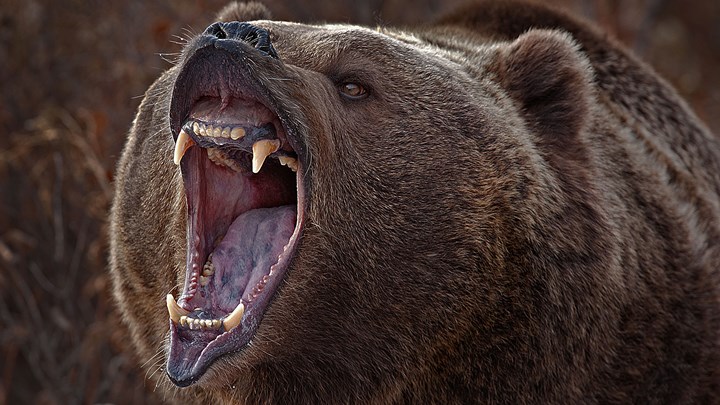
by Tim Irwin - Thursday, March 6, 2025

Days before the new federal administration took office in January, the Biden administration’s U.S. Fish & Wildlife Service (USFWS) denied petitions from Montana and Wyoming to delist grizzly bears from federal Endangered Species Act (ESA) protections. The delisting would have paved the way for grizzly bear hunting seasons in those states, but federal wildlife managers insisted the grizzly bear population still needed protection to recover from near extinction.
With that denial, the Biden administration’s USFWS also spelled out a new “more comprehensive” grizzly bear management program for the Lower 48. Its new plan clarifies primary grizzly bear zones in those two states plus Idaho and Washington. As shared by this NRA hunting news website, it lays a foundation to manage grizzlies as one unified population, or distinct population segment (DPS). Largely, the plan calls for reducing human-bear conflicts, which is vital for those of us who live amongst ever-expanding grizzly bear populations. The proposed changes were published in the Federal Register on Jan. 15 with a 60-day public comment period now open.
Governors in the region recognized that the Biden administration’s rationale underlying the decision not to delist was more about politics than biology. Montana Gov. Greg Gianforte condemned the decision, insisting grizzlies are fully recovered and do not need federal protection based on the best available scientific data. Governors in Wyoming and Idaho also are on record as holding similar positions. All three support recent studies that favor grizzly management being handled by the states.
Comments from Wyoming Game and Fish Department Director Angi Bruce mirror the sentiments of most wildlife managers. “This decision shows that no matter what we do, the USFWS refuses to recognize the state’s efforts as well as the sacrifices and compromises made by the public who live, work and recreate in areas occupied by grizzly bears,” Bruce said in an official statement. “This decision is unfortunate and disappointing for grizzly bears and for the people of Wyoming.”
So, all wildlife managers in these deeply red states can do is hold their breath and anticipate a change in direction from the Trump administration and the new players in Washington, D.C. Three of the states have developed detailed plans for grizzly hunting seasons. What Western wildlife managers are saying to the feds, as folks who live with grizzly bears on a daily basis, is, “Nice job … . Now we can take it from here.”
It’s about time they did as the species recovered years ago. All Western state wildlife agency officials need to start the delisting process is a biology-based green light from Washington, D.C.
In the meantime, for folks who actually reside in grizzly bear country, life goes on. As someone who lives smack dab in the middle of Montana’s prime grizzly bear domain—with the Metcalf Wilderness on one side and the Gravelly Range on the other—I’ve had three encounters with grizzly bears in the last two years.
Grizzly encounters are inevitable. And more frequent. But we have adapted. Whether we’re hunting, fishing, hiking, chopping firewood, trail-riding, birdwatching or rock hounding, almost everybody is packing bear protection. There’s nothing unusual about the juxtaposition of a fly-fisherman’s feathery casts into a river current with a 10mm Glock looped to his wader belt. A high percentage of outdoors people here take the belt-and-suspenders approach: a heavy handgun on one hip, a can of bear spray on the other.
We wish the grizzly bear population no major harm. The bears were part of the ecosystem long before the white man showed up and attempted to civilize the Rocky Mountain West. The wilderness would not be the same without grizzly bears. They are part of what makes wilderness great. We would, however, appreciate it if they respected us more.
Federal wildlife managers have done a stellar job of dragging the bears back from the brink. But the bureaucrats calling the shots from 2,000 miles away completely miss the fact that grizzlies recovered beyond their ranges’ carrying capacities years ago.
Just ask a rancher in Central Montana about grizzlies in his wheat fields, 100 miles from typical griz habitat. Or have a bowhunter explain why he calls for a buddy with a rifle to back him up the instant he puts an elk on the ground.
The feds have been playing nice with grizzlies far too long. Bears once had a certain respect for humans who interloped into their corner of wilderness. They rarely challenged a human’s place on the food chain.
Tightly regulated grizzly bear hunting seasons would, as one seasoned Montana guide is fond of saying, put the fear of God back in the bears. Wolves, after their populations had been restored beyond the critical phase, seemed to have lost their fear of humans. After one wolf hunting season, the packs became downright elusive and began stridently avoiding any and all human contact. Surely same reaction could be expected for “bullet-educated” grizzlies.
About the Author
A former editor for the NRA’s American Hunter magazine, Tim Irwin shifted to the marketing side of hunting and the shooting sports and ran his own advertising agency for more than 30 years. His diverse skillset cultivated some of the biggest brands in the industry, including Realtree, Walls, 10X, Leica Sport Optics, Weaver, Benelli and Beretta. More recently he has focused on marketing fine art canvas prints of his wildlife photographs and designing books while writing about conservation and the outdoors. Irwin lives in the middle of Montana’s prime grizzly bear domain and has had three grizzly bear encounters in the past two years. For a glimpse of his vast photography or to order fine art prints, visit his website at 12octobers.com.
E-mail your comments/questions about this site to:
[email protected]
